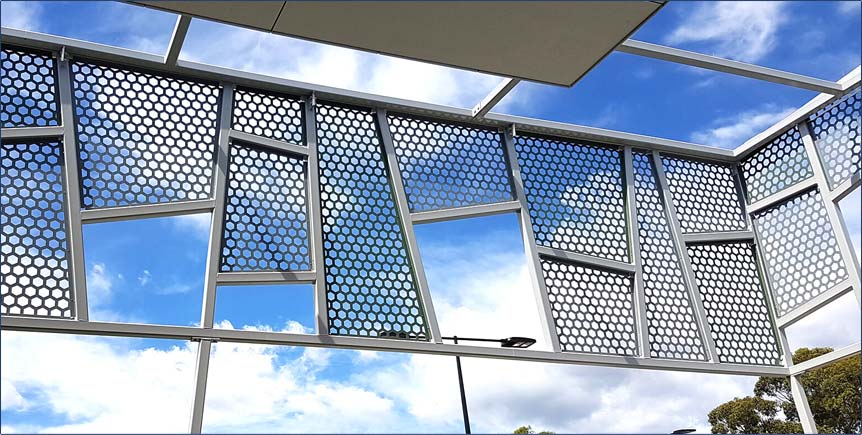Noise Attenuation Barriers An Essential Element of Modern Urban Planning
In the rapidly urbanizing world, noise pollution has emerged as a significant concern for city dwellers, affecting both physical and mental well-being. As urban populations grow and traffic increases, the incessant sounds of honking vehicles, construction activities, and even nightlife contribute to a cacophony that many find overwhelming. To mitigate this issue, noise attenuation barriers have become a crucial component of modern urban planning strategies.
Noise attenuation barriers, commonly known as sound barriers or noise walls, are structures designed to reduce the impact of sound from transportation sources such as highways, railways, and airports. These barriers serve to block or deflect sound waves, providing a quieter environment for nearby residents and wildlife. They can be made from a variety of materials, including concrete, wood, metal, and earth mounds, each offering different acoustic benefits.
One of the primary functions of noise barriers is to serve as a physical obstacle that interrupts the path of sound waves. As sound travels, it can bend around objects; however, the height, density, and location of a barrier can significantly reduce the level of sound that reaches areas beyond it. Ideally, a noise attenuation barrier needs to be taller than the sound source, and proper placement is critical. For example, positioning the barrier closer to the noise source rather than the receiver can enhance its effectiveness.
Acoustic Performance
The acoustic performance of a noise attenuation barrier is often quantified by its Sound Transmission Class (STC) rating. The higher the STC rating, the better the barrier is at blocking sound. While concrete walls have excellent STC ratings due to their density and mass, wooden or certain composite materials can also be effective, particularly when designed with additional sound-absorbing features. Innovative designs, such as incorporating greenery into barriers, not only improve aesthetics but can also enhance sound-absorbing qualities, creating a win-win solution for both environmental aesthetics and noise reduction.
Environmental Impact
Beyond their primary function of noise reduction, these barriers can have positive environmental impacts. Many urban areas are increasingly recognizing the benefits of incorporating green barriers, which consist of plants and trees alongside or even integrated into traditional noise walls. These living structures not only help reduce sound but also contribute to biodiversity, improve air quality, and offer visual benefits that enhance urban landscapes. Moreover, green barriers can help reduce urban heat islands, making cities cooler and more pleasant.
noise attenuation barriers

Social Responsibility
The implementation of noise attenuation barriers is often tied to social responsibility and community engagement. When planning new transportation projects, stakeholders must consider the impact of noise on local residents. Many municipalities conduct public consultations to discuss potential noise attenuation measures, allowing citizens to voice their concerns and preferences. Success in implementing these barriers often hinges on an understanding of community needs, as well as collaboration among engineers, urban planners, and residents.
The Future of Noise Barriers
As technology advances, the design and effectiveness of noise attenuation barriers are likely to improve. Researchers are exploring materials that not only block sound more effectively but also respond dynamically to changes in noise levels. For instance, active noise control systems—similar to noise-canceling headphones—are being tested in experimental applications. These systems could potentially monitor the sound environment and adjust barrier performance in real-time.
Furthermore, as urban areas continue to grow, integrating noise attenuation strategies into comprehensive urban planning becomes vital. Areas like residential zones adjacent to busy highways or industrial sites should have dedicated planning efforts to ensure the well-being of residents. The shift toward smart cities also presents an opportunity for more innovative approaches to managing noise pollution, integrating technology and sound management solutions into the urban fabric.
Conclusion
Noise attenuation barriers are crucial in addressing the growing concern of noise pollution within urban environments. As cities evolve, so must our strategies for ensuring a healthy and pleasant living environment for all residents. With thoughtful design, innovation, and community engagement, noise barriers can play an integral role in enhancing urban life, creating spaces that are not only quieter but also more vibrant and livable. As we move forward in this noisy world, the importance of noise attenuation barriers cannot be understated; they are indeed a sound investment in our collective future.
-
The Best Metal Mesh Solutions: Expanded Aluminum Metal vs. Expanded Stainless Steel Metal
NewsSep.10,2024
-
Round Perforated Sheets vs. Hexagonal Perforated Sheets vs. Embossed Perforated Sheet Metal
NewsSep.10,2024
-
Perforated Metal Sheets
NewsSep.10,2024
-
Experience The Excellence Of Stainless Steel Grating
NewsSep.10,2024
-
Discover the Versatility Of Metal Mesh Expanded Forming Machines
NewsSep.10,2024
-
Discover The Advantages Of Steel Grating For Sale
NewsSep.10,2024
Subscribe now!
Stay up to date with the latest on Fry Steeland industry news.

